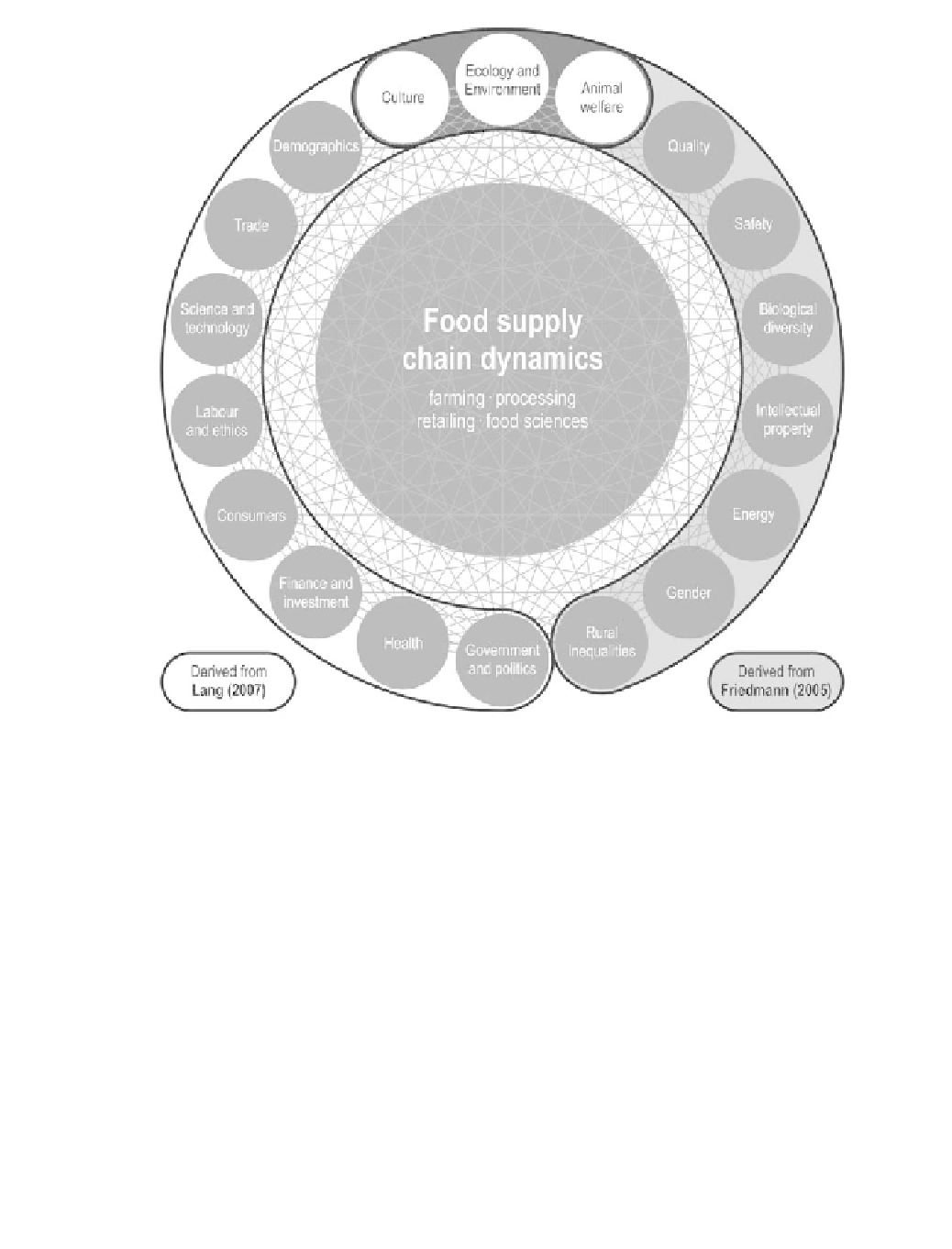Geoscience Reference
In-Depth Information
Figure 32.1
Contemporary food supply chain pressures.
regulators and private auditors, big citizen and consumer NGOs and big social
movement voices. How attuned are we to this new reality when attempting to
produce knowledge about food and agriculture? Overall, little is known about the
fi eld of actors. Less is known about the interrelations among actual actors, under-
stood as a complex and dynamic whole.
Human geographers working within the fi eld of food and agriculture are espe-
cially well positioned to use the rich insights from political and moral economy -
which emphasise connectivity and responsibility - to address the ethical and political
dilemmas that food and agriculture evoke. Recent books on food and agriculture
edited by human geographers reveal a vibrancy to geographic research and scholar-
ship (Fold and Pritchard, 2005; Maye et al., 2007). Positive though this conclusion
might be, some serious concerns plague both the wider literature and geographic
endeavour. First, ecologically centred accounts linked into political and moral
economy are just appearing, at least in the context of developed-nation food, agri-
culture, aquaculture and fi sheries. Second, urban food provisioning has received
insuffi cient attention, despite over half the world's population living in large cities.





